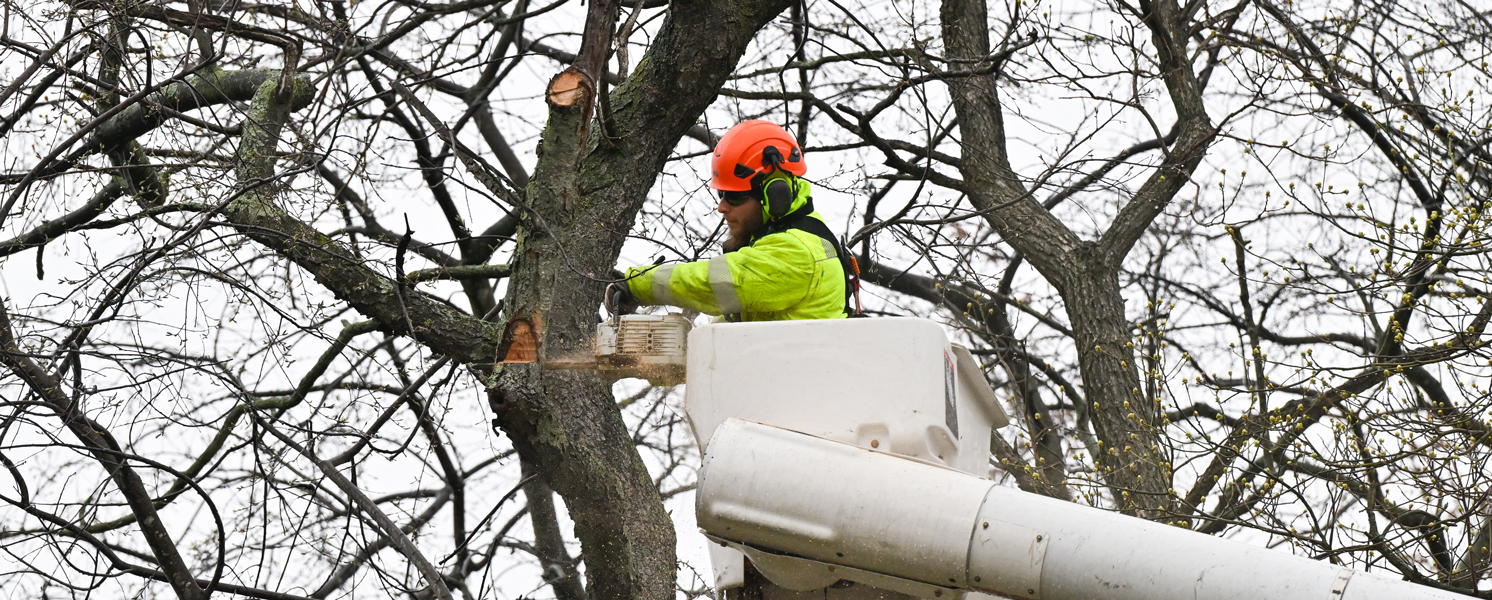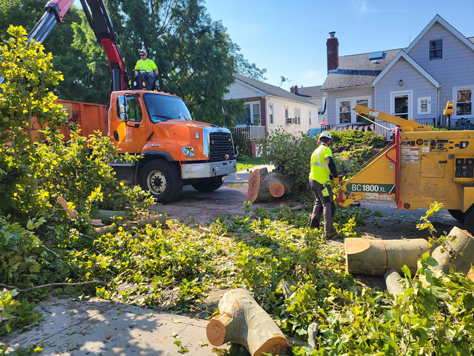Managing Tree Risk

As the stewards of New York City's urban forest, we care for our city's street and park trees while responding to more than 100,000 forestry-related service requests from concerned New Yorkers each year. To help keep our tree canopy healthy and safe, we're integrating modern tree risk management practices into the way we care for our urban forest.
Prioritizing Tree Work
In accordance with the latest industry standards set by the International Society of Arboriculture (ISA) and the American National Standards Institute (ANSI), Parks prioritizes tree work based on a technical tree risk assessment process. During our inspections, we take three factors into account to evaluate the level of risk posed by a tree condition, determine if work is necessary, and assign a priority ranking:
- Likelihood of tree failure: our inspectors look for defects in a tree that may lead to failure, including broken or hanging branches, cracks in the trunk or branches, or dead or dying parts of the tree.
- Likelihood of impact: after assessing the likelihood of a tree failure, our inspectors categorize the chances of that tree or tree part impacting people or property if it falls. The highest priority locations are those where people are frequently present.
- Consequences of impact: our inspectors also assess the consequences or harm that could occur if the tree or tree part falls and impacts people or property. Inspectors take into consideration elements such as the size of the tree or limb and the distance and characteristics of the potential fall.
Report a Damaged or Fallen Tree
Before you submit a tree service request, please make sure that you have not previously submitted the same request. If you need to check the status of your request, please visit 311 Online.
The City does not perform work on trees located on private property.
Report damaged or fallen trees one of three ways. Submit a request by calling 311, using our online tree service request form, or by locating the tree on the NYC Tree Map.
How Tree Risk Management Works
Whether in response to a public service request, or while performing routine, proactive inspections, we will assess each tree according to our Tree Risk Management protocol and create a work order within one of the following work priority categories:
- Category A (Extreme): Parks expects to address the issue within 7 days from the date of inspection, barring any weatherrelated or access delays.
- Category B (High): Parks expects to address the issue within 28 days from the date of inspection, barring any weather-related or access delays.
- Category C (Moderate): Parks expects to address the issue as soon as resources allow.
- Category D (Low): Low-risk conditions often do not require work. If an inspector determines that work is necessary to address low-risk conditions, we will address the issue as soon as resources allow.
About Our Inspectors
We conduct tens of thousands of inspections on our street and park trees every year. Our inspectors are trained urban forestry professionals, many of whom have advanced certifications from the International Society of Arboriculture (I.S.A.)
Severe Weather
Tree damage often occurs during inclement weather and severe storms. When there are high winds resulting in widespread tree damage, we will prioritize the inspection and resolution of storm-related conditions, and if necessary, scale up our capacity by enlisting the help of emergency contractors, and other City Agencies. To learn more about our coordinated efforts during these events, please visit our Storm Response page.
